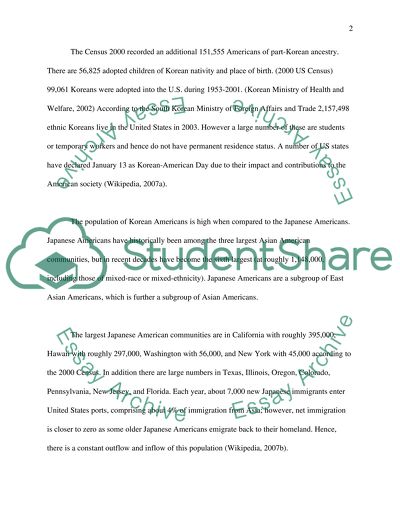Cite this document
(“Korean and Japanese Americans Essay Example | Topics and Well Written Essays - 2500 words”, n.d.)
Korean and Japanese Americans Essay Example | Topics and Well Written Essays - 2500 words. Retrieved from https://studentshare.org/miscellaneous/1499716-korean-and-japanese-americans
Korean and Japanese Americans Essay Example | Topics and Well Written Essays - 2500 words. Retrieved from https://studentshare.org/miscellaneous/1499716-korean-and-japanese-americans
(Korean and Japanese Americans Essay Example | Topics and Well Written Essays - 2500 Words)
Korean and Japanese Americans Essay Example | Topics and Well Written Essays - 2500 Words. https://studentshare.org/miscellaneous/1499716-korean-and-japanese-americans.
Korean and Japanese Americans Essay Example | Topics and Well Written Essays - 2500 Words. https://studentshare.org/miscellaneous/1499716-korean-and-japanese-americans.
“Korean and Japanese Americans Essay Example | Topics and Well Written Essays - 2500 Words”, n.d. https://studentshare.org/miscellaneous/1499716-korean-and-japanese-americans.


